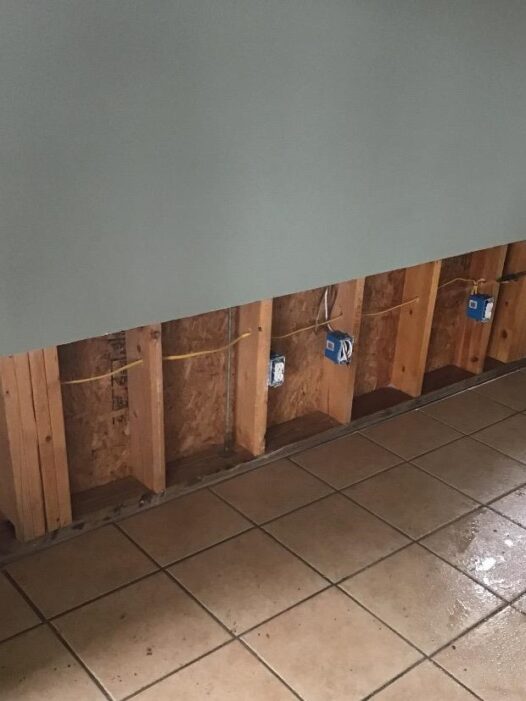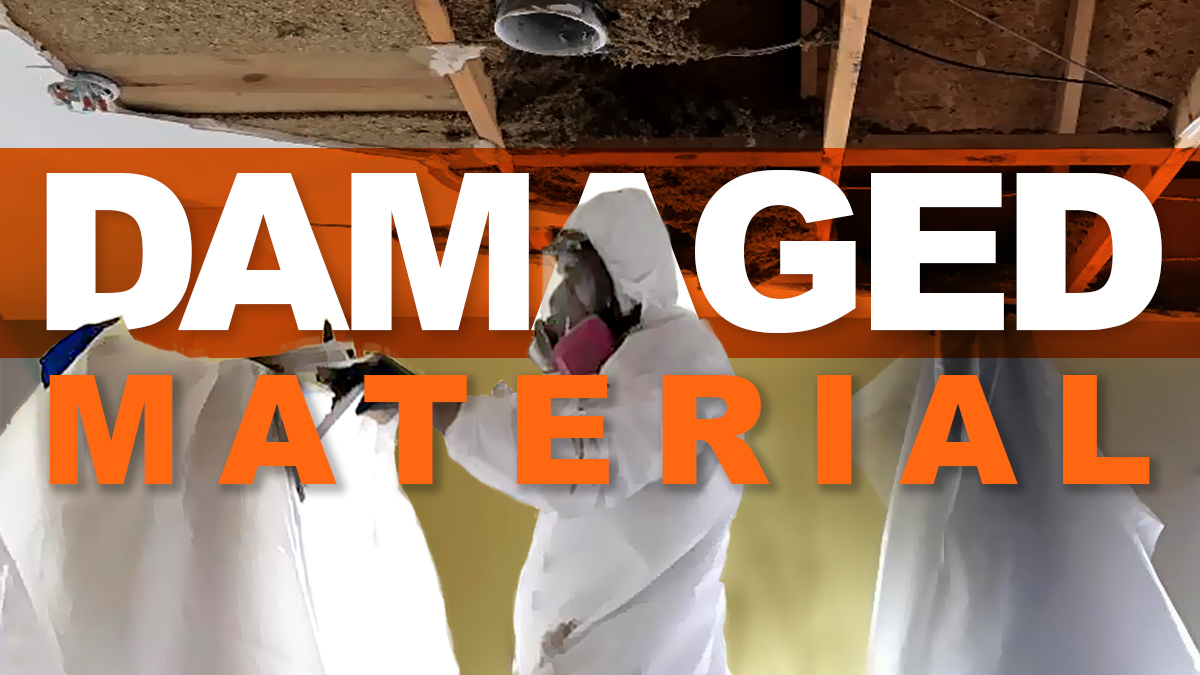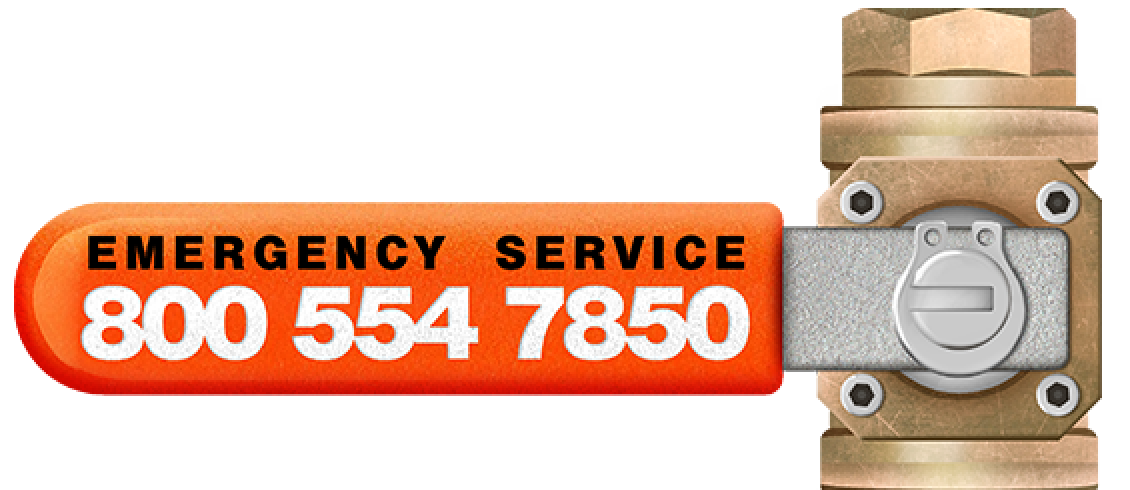Water Damage Series – Part 7: Damaged Material
This series is about water damage to your home or business. Remember, we’re talking about the sort of water damage that destroys all sorts of materials such as wood, drywall, concrete, carpet, insulation, furniture, electronics, clothing, sentimental memorabilia, important documents and so many other things the water will encounter along its path.
The reason you call in a water mitigation service is to stop the damage from getting worse and clean up the damage that has already been done.
Disruptive and Non-disruptive Drying

Water losses come in a wide range of severity. If you’re lucky, the water is a clean source, you are able to get to it quickly, and there is no real damage to your physical structure. In this situation, your water mitigation team will work quickly and employ aggressive, non-disruptive techniques to dry the affected area. Once it is dry, all is well, and you can move on.
But other times the water is contaminated, and it contaminates your property. Contamination is the first consideration in a structural drying situation. It is so because health is at risk. After a sewer backup, you are going to want anything the sewage touched to be either sanitized or to be removed completely. You can’t exactly remove and replace your building’s foundation if the concrete floor is contaminated, but you can do that with drywall, vanities, and carpet.
Even without contamination, if the water has been around long enough, it will damage your property. It won’t be just wet, but damage is done. That damaged material must be removed. We call that disruptive. Whenever you have a disruptive drying situation, after the drying is done there will be some build back required.
Water Losses Come in All Sizes
A loss could be as simple as needing to replace carpet and nothing more. A more severe loss could involve replacing some drywall, a ceiling, and flooring – a much bigger job. But some of the most severe losses will happen after a fire or major storm like hurricanes and tornados. There are all sorts of severity in between.
Each Situation Is Unique
A company like Construemax that has been around for over a decade will have ‘seen it all’, but yet still experience something new on every loss. Yes, that is contradictory, but it is still true.
We’ve seen roofs ripped off in a hurricane requiring the whole house to be stripped down to the studs.
We’ve seen a trash can in the carport catch fire and cause the house to catch fire too. In that case, it didn’t go very far before the fireman put it out. Even though the fire was contained, the hundreds of gallons of water used to put it out caused water damage from floor to ceiling in two rooms and a hallway inside the house.

And we’ve seen a burst pipe in an upstairs bathroom flood every room upstairs, soak into the floors causing the ceiling below to just collapse, and the whole downstairs be flooded too, even into the garage.
All of these cases have their own unique situations so the approach to each one of them is custom-tailored. But an experienced mitigation company knows what to do in any situation, and how to mitigate all kinds of material. Whether it’s drywall or plaster, concrete block or wood frame, wall to wall carpeting or 150-year-old hardwood floors, we’ve seen it all.
Restoration Simplified
It’s obvious that there are countless ways your home can be damaged by water. Each of those will have a custom way in which the water damage will need to be mitigated. But each of them will rely on the same set of principles of restorative drying.
The math involved in developing a drying strategy can be pretty complicated. There may be some hard to reach places that need to be evaluated and dried using special tools and equipment. Crawl spaces and attics can be small and might have critters. There may be all kinds of complications in your unique situation, but you should take comfort in remembering that restoring a property to pre-loss condition isn’t rocket science. That’s something at least.
Full recovery from a water disaster can be simplified down to two things:
- Mitigation – that is: extracting water, drying the property, and removing all of the damaged building materials.
- Restoration – Restoring the property to pre-loss condition by rebuilding, repainting, and recarpeting as needed.
This water damage series is just about the mitigation part. In previous posts, we reviewed some diagnostic tools and equipment used to develop and implement a drying strategy.
This time we’ll address what needs to be done when the building materials themselves (wallboard, studs, flooring, etc.) have become damaged beyond salvage.

Preparing the Space for Drying
After the water technician has identified what is wet and how wet it is, he will develop a strategy. As discussed in the post about equipment, there are formulas for determining what kind of equipment is needed, how much, and where to place it. But before that can happen, the technician needs to prepare the space for drying.
Again, what that means is different for every job. Sometimes it means removing everything from the affected room and putting it in another. Sometimes it means moving all of the items and putting them into a storage container that has been placed in the driveway. And sometimes the drying happens with your personal belongings in place…
In any of those situations there may be times that before we can start doing any drying, some damaged building materials must be removed because they are unsalvageable.
Sure, if it’s a simple loss, the space just needs to be dried, and all is well. But sometimes, even if you dry the carpet, the water has done so much damage that it just isn’t any good anymore. It must be hauled away and replaced.
Likewise, for drywall that is soaked with water, even after you dry it the warping and bubbling are noticeable. It might be so deteriorated that it will crumble with the slightest touch. A ceiling that has started to sag because of water is simply not safe. These need to be removed.
Safety Is Paramount
The highest priority on every job is safety. First and foremost is health. Not just for the technicians working on the job, but you, the property owner as well.
A water damaged ceiling that is sagging is a falling hazard. If you have a category 2 loss, you have contaminated water. Contaminated water will contaminate building materials. A contaminated property is a health risk
When a carpet is wet it might be able to be saved, but the carpet pad must go. That is not salvageable. If not removed, you can expect future problems.
Some building materials, like wall studs, might be able to be cleaned with cleaning solutions appropriate for the type of contamination it received. But some materials just have to be removed completely.
Removing Unsalvageable Materials

When you hire mitigation professionals to address water damage in property, and when you talk to your insurance adjuster about the water loss that you’ve experienced, you might here them use the word: demolition.
This word can sound scary and carries with it a connotation that you don’t want associated with your home. The idea that your home is going to be demolished. You might get images of a crane outside your home with a huge metal ball dangling from a chain, or a large animated guy named Ralph, wrecking your home by knocking down walls and destroying your memories. But that’s not what is happening.
In truth, some building materials become damaged beyond saving. Water and mold have already done the damage. And especially if that water has toxic contamination, those building materials need to be removed.
Instead of thinking of your technician as Ralph, think of him as a surgeon. The water damage and microbial growth are like cancers to your property. A surgeon will cut out the cancer so that healing can begin. That’s what your technician is doing. Cutting away the damage with a goal of saving all the building material that is still good.
So even if your adjuster asks you about the demolition, that doesn’t mean your home is being torn down. It’s an insider’s term that sounds scarier than it is.
We Use Standard Protocols

In the first article in this series, we introduced the IICRC, the Institute of Inspection Cleaning and Restoration Certification. They are the organization that establishes industry standards for emergency restoration. They publish a standard called the S500 that outlines the industry-standard practices for restorative drying of properties after a water loss. Your technician should follow that standard.
Your insurance company wants to make sure that when you have this water damage addressed by mitigation professionals, that they ‘get it all’, referring to water damage. If some is left behind, it can continue to cause damage later on, and that’s no good.
You may see that only the bottom of your wall was wet, but when the technician removed the drywall, they removed 2 feet from the floor. You might think that is excessive, but in reality, what that is, is the tech following protocols that have been put in place to ensure a complete job.
When It Is All Done
After the technician is done, when you look around, it may look like a construction zone because you have wall studs exposed, you might see the attic space or flooring for the second floor when you look up. You might be walking on plywood, particle board, or bare concrete floors. But now your property is in a condition where the technician can install the proper drying equipment and get the space dried quickly.
The removal of water-damaged building materials and personal property is all part of the process. Don’t be alarmed when the technician comes into your home with crowbars or power tools. It’s a sign that progress is being made.
After the demolition phase is done (see, that word isn’t so scary now, is it?) and your property is dried out, you’ve turned a corner and you can start looking at the restoration, where a new set of professionals come in to bring your property back to its former glory.









